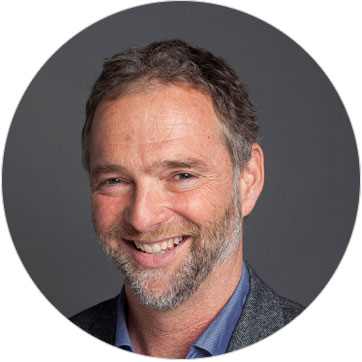By Andrew Grant
Are Mission & Values is it worth the agonising? A journey to find the core culture
Part 1: The power of the process
The final sentence, and that wretched comma
We have just finished the process of assisting an executive team from a Fortune 500 insurance company with designing and implementing a new 5 year vision that will be rolled out country wide. It was a rewarding experience with great outcomes. As we got close to the end of the session, however, the team became stuck in an in depth deliberation over a minute detail. “Do we put a comma in or not?” This discussion went backwards and forwards until I noticed the body language of some members who became increasingly impatient. Many were wondering, “Is it really necessary to debate about a comma?!”
As the facilitator of the process I tried to remain neutral. To an outsider the answer might be a clear, many would think this would be a waste of precious executive time, but what was really happening was much more than simply a pedantic debate about a ‘comma ‘. The team was actually involved in an engaging discussion about deeper core values, and you could say the comma was just the tip of the iceberg. This debate revealed critical differences in thinking about who the company really is and what it actually stands for. This process was even more important in this situation, as the Vision Mission Values (VMV) had to then be translated into a second language, so the drilling down to the core values and how they could best be represented in words was essential.
More than words: the power of the process
If a VMV is not clear at the board / executive level, how would the average employee know what the critical values are and how to action them? Flowery words are often thrown around in VMV sessions, and they do not always lead to practical actions. A lack of clarity in VMV statements can block employees from identifying and measuring appropriate behaviours effectively, ultimately rendering these statements confusing or at worst useless. When Wilson Learning surveyed 25,000 employees from the finance and tech industries, the respondents said they wanted a leader who could, “Convey clearly what the work unit is trying to do.” This visioning session gave the CEO the chance to communicate clearly to listening ears.
During the crafting of the vision with the insurance executives the common phrase “to be the best” was thrown around (as it is by many companies), but what became interesting was the process of coming to a more specific definition gave clarity on the CEO’s vision. It gave the CEO the chance to explain the point of differentiation he felt was essential: “We don’t have to be the best at everything, BUT we have to be the best at what WE DO”. This was a simple clarification that was so critically needed. You see up until that time the sales people had felt they had to match or better their competitors, but with this clarification the sales people now had a clear focus. So while to the outsider it would have appeared that the executive team was playing with semantics (and at the most base level we were), the process of what was going on behind the scenes was what was critical.
What most companies miss in the visioning sessions is that the journey to come up with the final sentence (that gets engraved and hung on the wall) is actually the most important part. And the more people in the organization are involved in this process, the more buy in you get.
Not just on the fridge – now the tough part, implementation
Several years ago we sent a film team (with a comedian and camera operator) to an office to ask the employees if they knew what their organisation mission and vision were. Many of them enthusiastically told us it was displayed on the fridge. However upon further questioning we discovered that nobody actually knew what the mission statement was, and we were told it was ‘in corporate speak’. Of course everyone claimed to be unable to speak ‘corporate’!
A vision statement needs to get off the walls (or in this case the fridge) and become implanted in the psyche of the individuals and the culture of the organisation. Again here we see the most effective way to do this is to involve everyone in the process so they are not only proud of it but understand what it means. The final sentence is really just a reminder of the journey they have shared together. To people not involved in this process it can become simply empty words, sometimes even cynical words if they have no real impact. If they cannot be implemented they can actually have a negative effect.
So, is a poor VMV worse than none at all?
See the 4 min video interview on YouTube: “It’s on the Fridge” https://www.youtube.com/watch?v=hJnYdl80UAQ
Part 2: Stripping back to the core
The problem with Kafkaesque vision statements
Scott Adams has become famous for tapping into the scepticism of the everyday worker when there is no clear vision or mission through a cartoon character called Dilbert. Dilbert portrays corporate culture as “Kafkaesque bureaucracies marked by a senseless, disorienting, often menacing complexity”. Through Dilbert Adam creates a world of work in which employees keep busy for the sake of being busy. The humour emerges when the characters make obviously ridiculous decisions that are natural reactions to mismanagement, and readers can easily tap into the sense of frustration that Dilbert represents.
The cartoon is humorous and highly successful because it captures the sense of frustration employees feel when ‘corporate speak’ becomes the norm, and when there is a mismatch between the apparently empty words that come down from the top to the daily actions of everyone else in the organisation.
Click here to the full article to test your skill at spotting the fake vision statements. 2 are Dilbert’s, one is Enron’s, and only one is real.
Test Your Skill
At spotting the fake vision statements:
- It is our job to continually foster world-class infrastructures as well as to quickly create principle-centered sources to meet our customer’s needs.
- Our challenge is to assertively network economically sound methods of empowerment so that we may continually negotiate performance-based infrastructures.
- To improve lives by mobilizing the caring power of communities.
- Respect, integrity, communication, and excellence.
Work in progress
I love to be challenged, so when I recently read a controversial book by Sam Keen called Dwelling in the Presence of the Sacred, I enjoyed the way it encouraged me to think about the important link between words and action. Keen explains how systems can become rigid through static language that isn’t anchored in action. He captures this idea that when the focus is on the words rather than the process, the meaning or the actions resulting from the words, they can be counterproductive or even dangerous.
“As humans we inevitably construct a linguistic frame around objects, events, and emotions. Language is our glory and our downfall, our greatest freedom and our maximum-security prison. Before we know it, the gossamer words we have spun to capture our fleeting experience harden into rigid beliefs that block the flow of passing moments and new meanings.
Every institution and profession—religious or secular—has its lingo. It is the nature of professions and organizations to invent special languages that are understood by insiders but are otherwise opaque; to be a professional is to speak in code. For the uninitiated, reading internal documents is like deciphering code. It is not uncommon for professionals of all kinds… to use obfuscation, complexity, and mystification to claim knowledge—and thereby power—unavailable to the layperson.”
Verbal fasting
One way to recover the original meaning and power of a VMV, according to Keen’s theory, is to adopt the radical discipline of ‘linguistic asceticism’. “Put yourself on an austere verbal fast: slim down; clean house,” he says.
Imagine if our organisations underwent a time of verbal fasting? Imagine if they put their old stories on hold while they spent time contemplating the real meaning and purpose of the organisation, just as people of many religious traditions fast as a time of cleansing for true reflection? It would certainly be difficult to know how to communicate initially, but eventually each person would learn to a create a new language with a fresh perspective and craft new stories, bringing new meaning to what they do.
At first things would probably get worse. People wouldn’t know how to talk about certain matters. But gradually people would begin to experiment with new metaphors and create a new poetry by sharing stories and by helping one another discover fresh expressions of their perennial fears and hopes. As Keen says:
“It would be interesting to see what would happen within corporations if, for one hundred days, it was forbidden to talk about profits, losses, stockholders, competition, or market share. Some workers might wonder out loud if what they were doing with fifty or sixty hours a week truly reflected how they wished to spend their fleeting years. Others might wonder whether the product being promoted was ecologically viable, or if their contribution to a global economy was likely to benefit those on the planet who needed it most, or whether we might choose to measure the success of our society by gross national happiness [as they do in Bhutan], rather than by gross national product.”
Those that want the ‘comma’ in a VMV and those that are less patient with a VMV inhabit the same world but experience and interpret it differently, our core statements (VMV) can only be an art, like poetry or music, expressing the poignancy of living in a world that evades our simplistic explanations
Foundations for success
Is creating a Vision and Mission statement worth the agonising? More than you could possibly imagine, but only IF it’s done properly.
Chris Norton GM of the award winning Four Seasons hotel has 5 simple steps to ensure a successful vision.
- Establish STROYTELLING AS THE CORNERSTONE of the organization
- Create BUY IN to ensure consistency
- Encourage a PASSION to ensure commitment
- Identify the organization’s UNIQUE THEMES for success
- Provide an ENVIRONMENT for the story to flourish

Gaia Grant (PhD) is a lecturer and researcher at the University of Sydney Business School in the Discipline of Strategy, Innovation, and Entrepreneurship, focusing on research into innovation paradoxes and ambidextrous leadership. Gaia is also a Director of Tirian Innovative Solutions, & the co-author (with Andrew Grant) of a number of books including ‘The Innovation Race’, and “Who Killed Creativity?”.

Andrew Grant is the Director of Tirian Innovative Solutions, and co-author (with Dr Gaia Grant) of a number of books including ‘The Innovation Race’, and “Who Killed Creativity?”.


